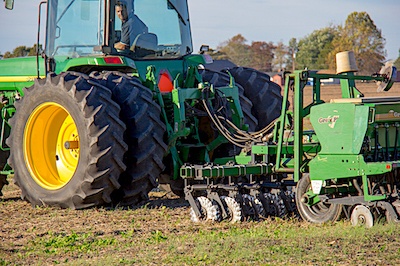
~ Press release issued by the Virginia Department of Conservation and Recreation
Never-before-seen levels of conservation funding for Virginia’s farmers are included in the new state budget. Producers throughout the commonwealth will benefit from expanded cost-share and tax credit opportunities.
Changes to the application for much of this support will also streamline the process for many farmers.
“We are very excited about the historic level of cost-share funding for farmers in the new budget, and grateful to the General Assembly for providing it. The governor has prioritized meeting Virginia’s Bay water quality goals, and with this money comes the responsibility to provide meaningful results,” said Matt Wells, director of the Virginia Department of Conservation and Recreation.
“We also know that we cannot meet our goals without true partnerships with our Soil and Water Conservation Districts and the agricultural community. This includes engagement, open lines of communication and mutual trust. We look forward to working with all of our partners to support agricultural best management practices across the commonwealth.”
Increased cost-share and tax credits
The Virginia Agricultural Best Management Practices Cost-Share Program, or VACS, is funded at a record high for the 2022-2023 program year with $123 million.
VACS is the state program that helps farms implement a range of conservation practices that protect water quality. By improving animal and soil health and reducing nutrient waste, these practices also help increase farm profitability — a key issue for producers as inflation rises.
DCR administers the state cost-share program in partnership with Virginia’s 47 soil and water conservation districts.
“Virginia’s soil and water conservation districts are the one-stop shops for state cost-share signup and practice implementation,” said Dr. Kendall Tyree, executive director of the Virginia Association of Soil and Water Conservation Districts. “We applaud the governor and the General Assembly for this record show of support for voluntary conservation efforts and look forward to serving Virginia’s agricultural community in our district offices.”
Farmers may receive up to $300,000 in state cost-share reimbursement for more than 70 best management practices including:
- Cover crops
- Nutrient management plans
- Forested or herbaceous buffers
- Animal waste systems
- Livestock stream-exclusion systems
Many of these practices can often be funded through a combination of state and federal funds, reducing the farmer’s expense to less than 25% of the total cost.
Also available to Virginia’s farmers this year are:
Up to $25,000 in state tax credits for fully implemented agricultural best management practices.
Up to $50,000 in tax credits for best management practices on lands with an approved resource management plan.
To apply for funding or tax credits, farmers should contact their local soil and water conservation districts.
Streamlined paperwork for many producers
Farmers in many localities will now find it simpler to apply for funding to support multiple nutrient management and/or cover crop best practices.
Under what is sometimes called a “whole farm approach,” a producer only has to submit one cost-share application to cover all of the nutrient management practices, or all the cover crop practices, established on as much acreage as desired.
Previously, this program was only available to farmers in Essex, King and Queen and King William counties, and in the Chesapeake Bay watershed of the Eastern Shore.
This year, however, farmers in Carroll, Gloucester, Grayson, Halifax, Mathews, Middlesex, Page, Rockingham, Washington counties — and all of the Eastern Shore — may also participate.
The program year ends June 30, 2023.
More information on Virginia’s soil and water conservation programs can be found at https://www.dcr.virginia.gov/soil-and-water/.
•••
RELATED ARTICLES
Incentive payment rates increase for poultry litter transport
Virginia farmers diversify and expand with value-added agriculture
Virginia sweet corn flourishing despite blistering heat
Spotted Lanternfly quarantine zone expanding to more Virginia localities, including Page County
Virginia Tech researchers working to develop methods to measure farm-to-fork food loss
Study examines meat retailing opportunities for farmers
Future of farming in Page, a work in progress
Extension Office seeks vendors for weekly farmers market at PMH June through October



Be the first to comment